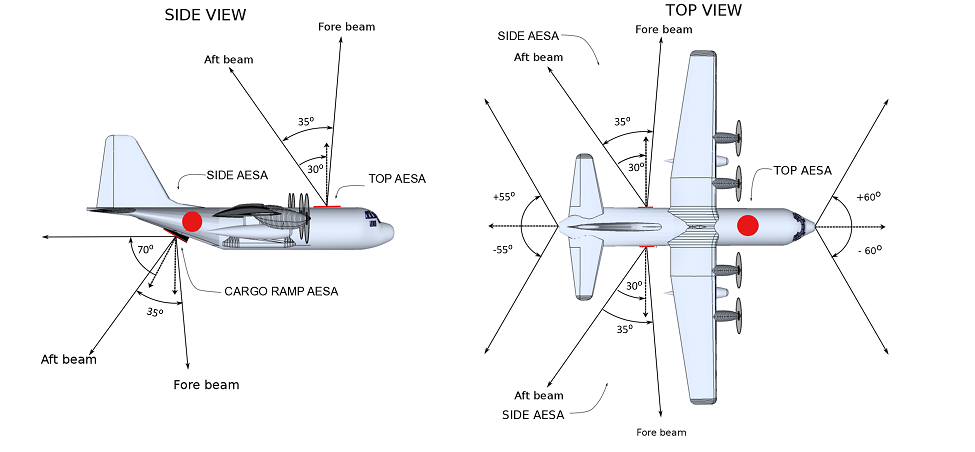The proposed APAR system consists of the radar front and back end subsystems. The radar front end consists of the four AESAs mounted to the exterior of the aircraft. The radar back end resides inside the aircraft and contains the hardware and software required to control the AESAs and to process, display and archive the data. The NSF/NCAR C-130 nose surveillance radar data combined with the APAR surveillance mode reflectivity will provide enhanced situational awareness to contribute to safe aircraft operations during extreme weather. The 3D volume-scan data will help guide real-time radar operations and provide the basis for improved analysis of the phenomenon of interest. The APAR system will be a significant addition to the existing NSF/NCAR C-130 instrumentation suite, providing new insights and context to weather observations from the platform.
ADVANTAGES OF APAR
The APAR system will be a state-of-the-art airborne weather radar with the following unique/advantageous features:
- Dual-Doppler capability and rapid scanning to observe the 3D kinematics of storm structures.
- Dual-polarimetric capability allowing observations of storm microphysics and significantly improving our understanding of in- cloud mixed phase microphysical processes which will in turn lead to better estimates of heavy precipitation and potential impacts.
- C-band transmit frequency that penetrates deeper into heavy precipitation due to less attenuation than the extant X-band airborne radars.
- The ability to form multiple, simultaneous beams using digital beamforming techniques that allows for fast scanning and interrogation of rapidly developing weather systems such as tornadoes.
- An airborne radar mounted on a long duration aircraft to allow sampling of weather in remote locations.
TECHNICAL SPECIFICATIONS
- Frequency: 5.35 GHz – 5.45 GHz
- Total Elements per AESA: ~2400
- Beamwidth (El/Az): <2.2o
- Hybrid Digital Beamforming
- Antenna Gain: ~38 dB
- Min. Detectable Reflectivity @ 10 km: -11 dBZ
- Peak Transmit Power: ~28 kW
- Polarization: Dual Linear
- Typical Boresight Sampling Volume (Radial x Along Track x Cross Track): 150m x 395m x 380m @ 10km
- Along Track Spacing: <= 300 m (Aircraft Speed 120 ms-1)
